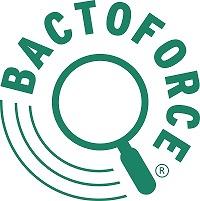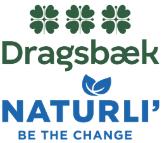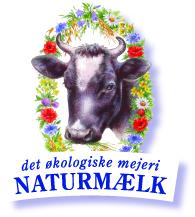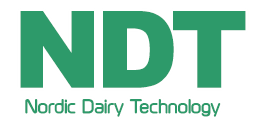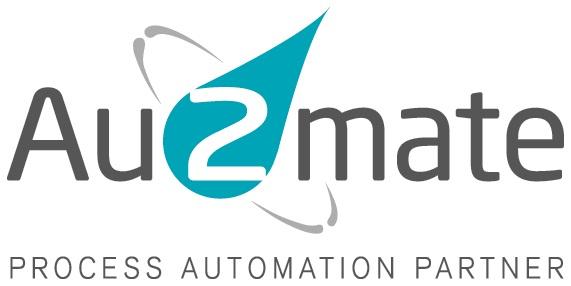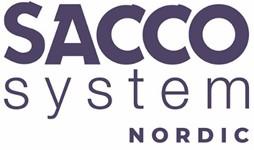
New products, new processes, new packaging make collaboration and the process around new product development extremely important in all companies. Employees at all levels in the industry may have experienced a production start-up or launch process fail in one way or another, and many companies work focused to create tools and processes to optimize “New products - from idea to supply chain”.
The seminar will deal with topics that target these challenges and the program for the seminar will include presentations about idea generation, design and development from laboratory scale, pilot plant trials, and scale-up to production. The work with test matrices, testing of products and durability tests, etc. will be addressed as well. Another subtheme is how to ensure the collaboration between the many different stakeholders who are involved in the process – especially with focus on first line managers and employees who in the end are in charge of the production launch.
Sign up here
Download the program here

How we manage Product Development in Arla Foods and a deeper dive example from the long-life Beverage Category.
How does a company like Arla Foods move from a first idea to a real product available on the shelves? With a business covering a very broad range of dairy (and recent years non-dairy) categories but also a business, which is represented all over the world, in markets with very different economies, legislations, sizes and agendas, this can be a complex task to complete.
To ensure a great launch, considering the areas mentioned above, with a proper time management - and where needed resources are available at the right time, all product development projects are approved and managed by the same model of progression. This strongly improves the chance of alignment and success both cross operations and cross the world.
Vivian has worked with product development for more than 9 years in Arla Foods for their European and International Markets within the category long life Milk Based Beverages. In this presentation she will introduce you to the Stage Gate model used for all product development projects in Arla Foods. She will bring some examples from different dairy categories within Arla Foods and dive deeper into one of her own productlaunches back in 2019. Finally, she will share some reflections on what, from her experience, is crucially important, seen from the developer’s seat, when sitting in the middle of a fast-forward launch project.

Travel-free product trials Product Development Centres
With a focus on collaboration and partnership, the Tetra Pak Product Development Centres (PDC) support customers’ efforts to create new, profitable products and evaluate the equipment needed to produce them. Privacy and confidentiality guaranteed.
During the Covid pandemic, the PDC Lund, Sweden, quickly converted all trials into a travel-free experience; developing an innovative online setup where stakeholders could participate remotely. Travel-free product trials for customers feature all PDC-facilities, personnel, and expertise, together with a Trial leader and an Audio/Video Director running the studio to give the best trial experience.
This way of conducting product trials, in which it is possible to attend in person, remotely or in combination, not only helps reduce transport emissions but also saves on travel costs and time spent. This is just one of several sustainability advantages when running trials, others include e.g. optimising recipes to save on or substitute ingredients, and experimenting with different processes to reduce waste, energy and water consumption.
With trial data visualised in real-time, all participants get a clear understanding of the results as the trial progresses. Plus, participating companies select who attends which parts of the trial, further streamlining the process.

Design of Experiments (DoE) in the intercept between NPD and Supply Chain
Use DoE and get more info out of your expensive experiments! Design of Experiments (DoE) is a systematic and efficient approach for collecting data and making discoveries. DoE is very efficient for collecting knowledge of cause and effect between factors and responses, where factors are input variables like process settings and ingredients and responses are the parameters in focus, e.g. quality. Furthermore, DoE enables understanding of the combined effect of factors.
DoE is not a new technique, as the ground principles were described back in 1926. Traditional designs are built following strict rules to be calculated by hand, but now computer-generated designs make it possible to create even more efficient designs. With these it is possible to gain markedly more information about correlations from fewer experiments.
The presentation will give a brief introduction to DoE and then dive into cases where DoE has made a difference in the intercept between new product development and production in supply chain.

Predictive food microbiology models and software – tools to facilitate safety evaluation of new products
Contamination of dairy products and ingredients with human pathogenic microorganism can be difficult to avoid e.g. for Listeria monocytogenes and for the spore formers Clostridium botulinum and Bacillus cereus. It is therefore most important that new products are formulated, processed, packed, and distributed to prevent growth and toxin formation by these microorganisms. Regulations and/or guidelines are available for some food/pathogen combinations, but these may request high salt content or very low pH that are not compatible with flexible development and innovation of new tasty and healthy foods. To help overcome these challenges predictive food microbiology models and software have been developed. By using examples for L. monocytogenes, C. botulinum and B. cereus this presentation shows how these tools can be used to facilitate safety evaluation of new products from idea to supply chain.

Scale up for production.
Scale up from laboratory and pilot-scale to commercial production is often complex with many technical as well as non-technical aspects that must be addressed to be successful. Many times, lab-methods are not easily scaled up and more efficient alternatives are required for commercial scale.
A scale up process typically includes a need to produce food-grade product samples for application test and customer test. This can be done internally or via contract producers with the associated pros and cons to be considered.
When a commercial production facility is to be designed, the best suitable unit operations, line design as well as automation and production philosophy must addressed. Mass balances, energy balances and logistic are crucial to establish a sustainable production. All these elements are typically in focus in early design phases. LOD and use of P&I-diagrams in different design phases are presented.
We will present different ways to go from small scale to commercial scale production and examples on conceptual design in relation to selection of best suitable technology. In addition, we will present other typical challenges that are related to scale-up and establishing of commercial production, including IT infrastructure and organization development. These transition activities are often neglected in projects despite the significant cost related to transition.

How to implement new FT-NIR methods for quality control
Introducing a new unique kind of product for production rises a need for efficient analysis methods for the components that are required to measure and control to ensure a consistent product quality. FT-NIR technology is one type of method that can be used for fast analysis of major components in dairy and food products. In the presentation there will be given hints and advises on the aspects of setting up a new method based on FT-NIR. This includes options on how to best present the sample matrix to the Analyzer to get representative measurements, and how to build new calibrations models that are adapted to specifically fit the product and process conditions and hence can fulfil their purpose with an acceptable performance. An important step is to estimate potential sources of error by evaluating sampling, reference methods and analyser performance. To run-in a successful Analyzer application is an on-going and iterative process and requires both effort and commitment from lab personnel. If done efficiently, the implementation phase can be short. Continued validation of results and performance is important, and a system of how to efficiently monitor and validate Analyzer performance as part of the implementation will be presented.

Achieving our goals after six years of development: This is how a new patent pending natural cheese wax was created
A development journey was launched when it became clear that the cheese wax portfolio should be rethought and expanded to meet the future needs of the market. The conversion led to the development of a new cheese wax product based on alternative raw materials. A change that is now proving to be beneficial for both customers and the market.
The talk is about the thoughts and decisions that preceded the start of the project and the journey along the way. Because where does the road lead to a place that does not yet exist? Product manager Maja Duelund reviews how the right idea was found and selected, how prototypes were developed, as well as which process steps were involved in scaling up from laboratory scale to pilot scale and further to production scale. Support from Fødevareklyngen (the Danish Food Cluster), Innovationsfonden (The Innovation Fund) and the European Eurostars was indispensable in the project. Furthermore, examples are given of value-creating collaborations with the Teknologisk Institut (Technological Institute) and selected key customers.

Open Innovation for transfering Arlagaarden to China
Sinne has worked for 4 years for Arla in China from 2013-2017, where she started as Technology Manager in the newly started 'China Denmark Milk Technology Centre'. The purpose of the center was to transfer dairy knowledge/technology from Europe to China, with Mengniu (Arla's partner in China) as partner and first deployment site. The first major project in the center was the rollout of the Arlagaarden in a Chinese context and this gave rise to many exciting learnings that Sinne will share excerpts from




